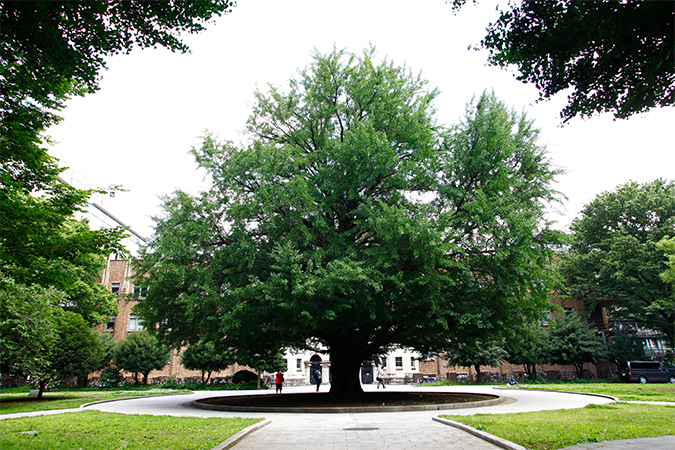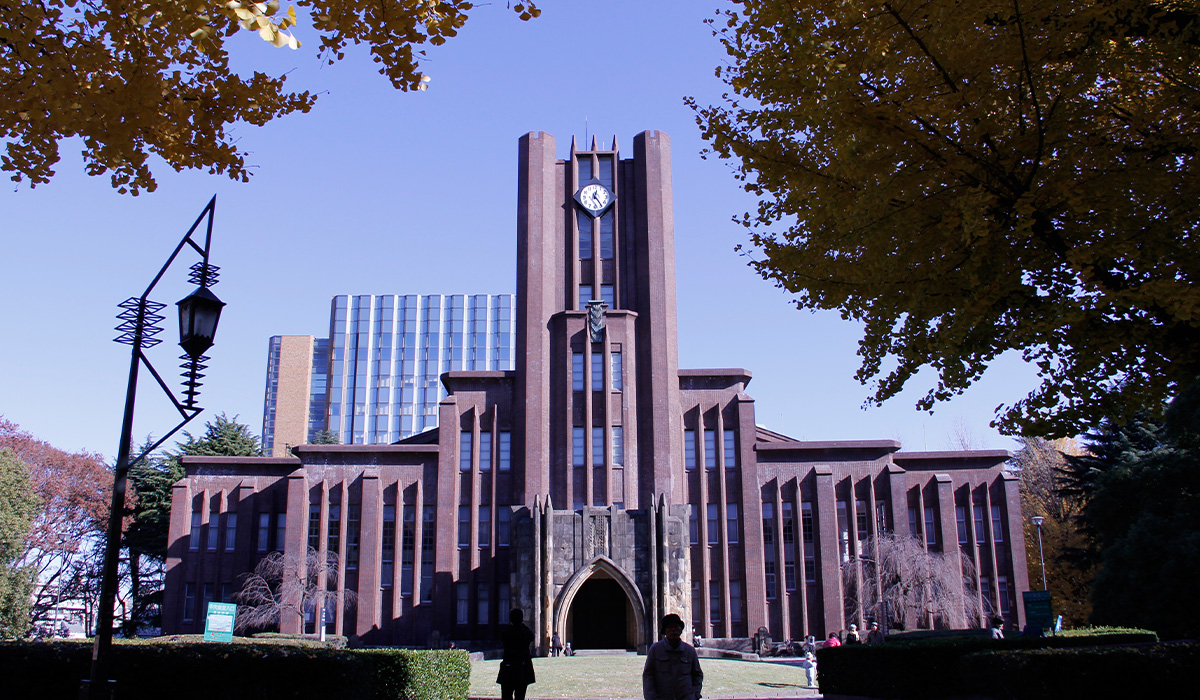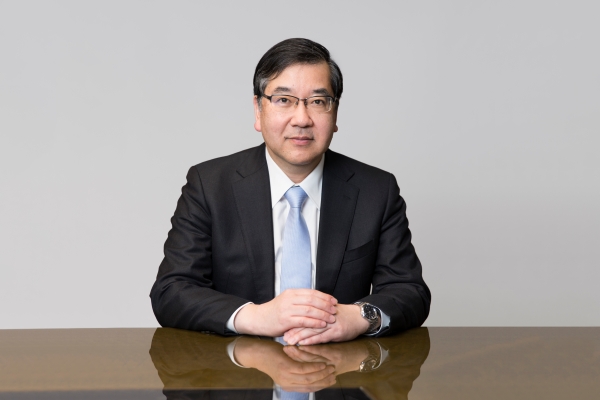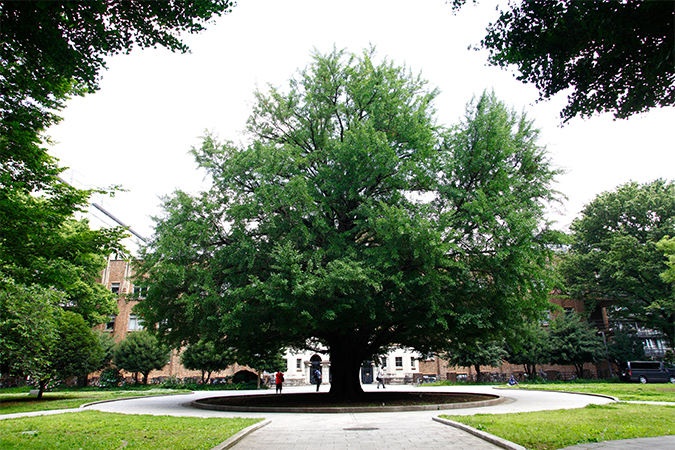How universities can become a platform for social change President Gonokami outlines vision, initiatives for better future in article on World Economic Forum website

President Makoto Gonokami has written an article, titled “How universities can become a platform for social change” for the World Economic Forum (WEF) website.
The World Economic Forum is the International Organization for Public-Private Cooperation, which is committed to improving the state of the world. The Forum engages the foremost political, business and other leaders of society to shape global, regional and industry agendas.
The full text of the article follows.

How universities can become a platform for social change
Today, we are experiencing rapid development in information and communication technologies, a digital revolution. New technologies, including artificial intelligence (AI) and deep learning, give us the power to use big data, bringing about a dramatic change in the way we create economic value.
Many industrialized countries achieved economic growth by shifting from a labor-intensive to a capital-intensive economy. In many of these countries, manufacturing used to be the center of value creation. However, today, the center of value creation is shifting to knowledge, information and services based on a combination of both. This paradigm shift to a knowledge-intensive economy is also bringing about a historic transformation in human society.
Birth of Society 5.0

In September 2016, I joined the Council on Investments for the Future, organized by the prime minister of Japan. We argued that the digital revolution, or the Fourth Industrial Revolution, is a great opportunity to use technologies to solve difficult social issues, reduce disparities and create a better future society for all. We named this ideal future “Society 5.0.”
The focus of Society 5.0 is creating an inclusive society, where humanity’s sustainable development is achieved through valuing diversity and providing opportunities for everyone to achieve their full potential. The University of Tokyo is working with companies along this line. For instance, H-UTokyo Lab, a joint research lab with Hitachi, aims to transfer the idea of Society 5.0 into the real world. Our focus is to improve our living environment using smart technologies. Research topics include habitat innovation and energy.
An inclusive society is a positive side of the digital revolution. Meanwhile, some are concerned that the digital revolution may instead increase disparity, suggesting that technology alone is not enough to achieve a fair future. We also need to create new social systems and economic mechanisms so that these technologies are available to all and we can use them to solve social issues.
Overcoming social issues – and the role of academia
This process requires great creativity, and it is one that academia can make a great contribution to. Academia’s strength is in creating new knowledge and educating the people who can utilize it. Academia can provide comprehensive and objective input to design innovation, social systems and economic mechanisms.
Naturally, to make sure everyone can enjoy the advantages of the digital revolution, it is important to involve people from all sectors and encourage them to work together. In doing so, we need to share a common vision of the future that we can work toward with a strong will. We should also encourage people, especially the young, who are motivated to contribute to solving social issues. The university is the best place to realize both of these requirements.
SDGs as a collaboration platform
The Sustainable Development Goals (SDGs) are a good tool for sharing a common vision of the future. The SDGs and Society 5.0 have much in common. Both seek to create an inclusive society, and both are driven by science, technology and innovation.
In July 2017, the University of Tokyo launched a university-wide program, Future Society Initiative (FSI), to promote science, technology and innovation for achieving the SDGs. We do this by making full use of our academic resources across the sciences, engineering, humanities and social sciences.
WASSHA is an example of such activities. This start-up company from the university’s School of Engineering provides electricity to off-grid villages in Tanzania, using a solar lantern composed of a battery and a solar panel. New information technology and a mobile money payment system enable WASSHA to supply electricity to about 240,000 people in the region, contributing to the local economy and quality of life.
WASSHA is a good example of how we can implement technology to realize Society 5.0. It shows how business using data and technology can help create an inclusive society. This aligns with the concept of inclusive growth, one of the main topics of this year’s annual meeting in Davos, organized by the World Economic Forum.
PPAPs – Public-Private-ACADEMIC Partnerships
Some pointed out at Davos that utilizing data is key to realize inclusive growth in a digitized world. Prime Minister Shinzō Abe announced that Japan would take the initiative in establishing DFFT (Data Free Flow with Trust). This is a new global framework for data management that allows people to make use of various types of data for the benefit of all humanity, while also ensuring that personal and other information that needs to be securely managed is well protected. Such a global framework is useful for promoting innovative ventures like WASSHA, which contribute to solving social issues. Again, universities can play a key role in this framework because they already have global academic networks based on trust, and experts who can handle large amounts of data properly and efficiently.
In one of the media sessions at Davos, I emphasized the importance of PPAP, the role of academia in Public-Private-Academic Partnerships. Japan is already committed to realizing Society 5.0 through a multi-stakeholder approach, and universities are becoming a great platform for such activities.
Economic mechanism and SDGs
With the introduction of the Principles for Responsible Investment by the UN in 2006, it became a trend among many investors to incorporate environmental, social and governance (ESG) factors into investment decisions. It is said that it will enable better risk management and generate sustainable and long-term returns for investors. Thus, it has become crucial for companies to work on ESG issues. Since ESG factors and the SDGs have much in common, companies supporting ESG factors could benefit greatly from collaboration with universities pursuing the achievement of the SDGs.
In November 2017, the Japan Business Federation (Keidanren) adopted the SDGs in its Charter of Corporate Behavior. Last November, Japan’s Ministry of Economy, Trade and Industry (METI) launched the SDGs Management and ESG Investment Study Group, a multi-stakeholder panel of which I was a member. Our discussions led to the publication of the Guide for SDG Business Management by METI in May 2019, which encourages companies and investors to incorporate the SDGs in their growth strategies. It emphasizes that initiatives to solve social issues may cultivate new markets for companies, and that innovation through industry-academia collaboration is key. The G20 meeting and the Tokyo International Conference on African Development are good opportunities to display this multi-stakeholder approach in achieving Society 5.0.
Encouraging entrepreneurs

It should be emphasized that if universities collaborate more with companies through the shared goals of the SDGs, universities can make a greater contribution to creating a better society.
Among many areas of such collaboration, collaboration on the utilization of data is extremely important in this era of digital revolution. In this sense, Japan has a great advantage in the form of SINET (the Science Information Network), an ultra-high speed and low latency information network that covers the whole country through nodes connected to and operated by universities.
SINET was originally designed for academic activities, but the Japanese government is now planning to expand its functionality so it can be used to create new economic value, through industry-academia collaboration.
Last month, we held a business plan contest in Tokyo, at the Applied AI Summit (AI/SUM), to encourage entrepreneurs to come up with ideas to use SINET for innovation. Nineteen people in eight teams from across Japan presented their innovative ideas for businesses using data and AI to solve difficult issues. Most were university students. We hope to hold such business plan contests across Japan and encourage more young people.
Perhaps the most important point for multi-stakeholder collaboration is sharing a clear vision of what a better society actually is. Without it, we will not be able to create strong synergy between our activities. This requires deep understanding about the people in local communities, including their cultural and historical backgrounds and regional characteristics. In other words, we need a deeper understanding of who we are. This is where knowledge accumulated by the humanities becomes very important. I strongly believe that universities, with a variety of disciplines, are the best place to serve as a central platform for shaping a better future for all. In this regard, Tokyo College is our new endeavor to spark public dialogue to create a vision of our shared future.
The role of universities is changing greatly. In the 20th century, when modern universities began, their function was to serve as a launchpad, educating young people and sending them out into society. In the 21st century, we envision the university as a platform for social change, involving all generations and collaborating with all sectors to create new social and economic systems, that will lead us to a better future.
With the G20 meeting to be held in Japan, I hope to see Japan take the lead in diverse arenas, including the digital economy, founded on academia’s new role as a platform for social change.






